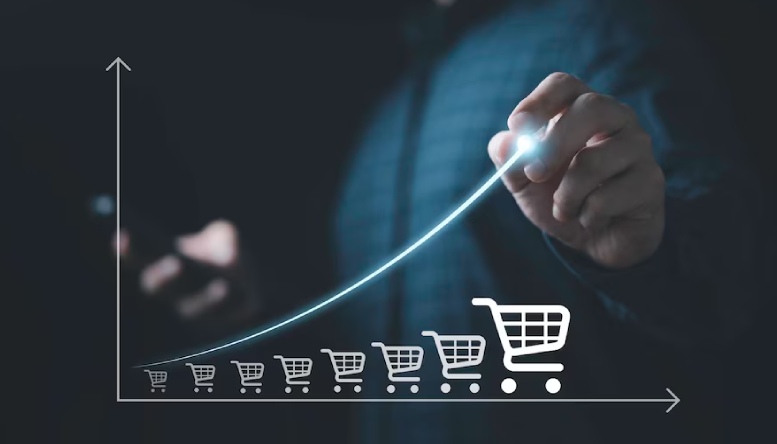The Role of Personalization in E-commerce Marketing
- September 30, 2024
- Post By: MERLIN MATHEWS

Personalization is a magic spell to the world of e-commerce. The power of personalization lies in giving each and every customer that experience of uniqueness, being valued and understood. But what does personalization in e-commerce entail, and in what ways can brands tap into this to further push sales and customer satisfaction? The blog ‘The Role of Personalization in E-commerce Marketing’ discusses it all with the insights from the experts of our digital marketing company in UAE.
What is E-commerce Personalization?
E-commerce personalization refers to the practice of tailoring the online shopping experience for each customer based on their preferences, behaviors, and past interactions. It uses data to create customized content, product recommendation, and even special offers based on the specific needs of the user. In simple terms, it’s about serving the right product to the right person at the right time.
This can be something as simple as the customer’s name at the top of an email or as complex as suggesting dynamic products based on that shopper’s browse history. At whatever level, it’s all about relevance and engagement for the shopper experience.
Why Personalization Matters in E-commerce
Personalisation allows companies to cut through the ruch of a world full of generic ads and wrongly suggested products. In fact, over 74% of people get frustrated when content is not aligned to their preference, and 80% of customers would like to purchase from a company which can offer them personalisation.
The following says why personalisation is more than just a good-to-have:
-
Boost Customer Engagement
Personalized content is more likely to be noticed by the target customer. Whether it is a recommendation on the homepage or a product in an email, customers tend to engage with content that appears to be customized for them.
-
Better Conversion Rate
If you show the customer what he/she needs, the customer is going to buy that. Personalization removes the guesswork, making the purchase decision easier and boosting conversion rates.
-
Creates Loyalty to the Customer
Personalization is not merely about making sales; it is all about building a relationship with customers. If a customer feels that a brand really understands him, then he will keep on coming back and be a brand advocate.
-
Reduces Cart abandonment
Once customers have added some products in a shopping cart without actual purchase, targeted messaging and personalized offers will bring them back on track.
Key Personalization Strategies for E-commerce Success
Personalization for ecommerce does not necessarily have to be complex. Here are strategies which leading digital marketing agency UAE suggests, that any business can use to begin personalizing the e-commerce experience:
-
Personalized Product Recommendations
Perhaps the most common form of personalization is to analyze customer behavior in order to recommend items that a customer is likely to want. Whether you call it a “Recommended for You” section on your homepage or similar product suggestions, personalized recommendations do have a clear impact on sales.
-
Dynamic Content on Websites
The dynamic content is dynamic in character since it’s changed based upon the one who views the material. For example, if a repeating customer comes to your website, you can indicate to them personalized banners tailor promotions or a nice welcome message that appeals as exclusive.
-
Campaign Email Targeted
Though email marketing originated more than two decades ago, it is still considered among the most effective channels of personalized content. Use your data to segment your email list and run targeted campaigns. For example, if a customer has shown interest in a specific product category, update them when new arrivals come into the store.
-
Personalized Discounts and Offers
Who does not like a bargain deal if it is offered in a personalized manner? Personalized discounts based on past purchases or browsing behavior motivate customers to complete a transaction.
-
Behavioral Triggers
Create autoresponder messages triggered by certain actions taken by your customers, such as checking out a specific category, abandoning items in the cart, or viewing a product page several times. These triggers allow you to reach out to customers at the precise moment.
Implementing E-commerce Personalization Challenges
Benefits of personalization are self-evident, but the successful implementation of personalization is complicated with concerns like:
-
Data Privacy Concerns
With higher standards for data privacy, such as GDPR and CCPA, businesses must be cautious in how they collect and use customer information. There must be transparency and consent, so one cannot alienate the customers in the process.
-
Integration Issues
To be successful with personalization, all customer data – from interactions on websites to every previous purchases-can be looked at totally in a single view. It becomes complicated if you have to employ several tools and platforms that don’t talk too well to each other.
-
Over-personalization
Personalization also runs the risk of being taken too far. On the other end of the spectrum, customers can find it overwhelming and even invasive to receive ads and personalized recommendations bombarded at them in an uncanny and extremely targeted manner.
Future Trends in E-commerce Personalization
E-commerce personalization is always up to something new and reinventing ways that the new technologies and strategies come into the picture. Some emerging trends of it include:
-
Artificial Intelligence and Machine Learning
Artificial Intelligence is the new personalization. Due to machine learning, with such humongous volumes of data to analyze, e-commerce will probably better predict preferences for their customers in a live setting.
-
Voice Search Personalization
As smart speakers and voice assistants become increasingly popular, there are definitely odds that e-commerce sites will eventually have to optimize for voice search too. In this case, personalization is not only seen but also heard.
-
Augmented Reality (AR) Experiences
AR transforms the customer-consumer interaction with products on the web. Imagine how a piece of furniture would look in your living room before you buy it. Expect more interactive and personalized shopping experiences with each advancement of AR.
-
Hyper-Personalization
Hyper-personalization is the application of AI and real-time data to provide even more customized experiences beyond what’s generally covered under personalization. This could go as far as tailoring both the products being shown and the tone or language in messaging.
Get A Call back from Our Expert
Need tailored guidance or have specific questions? Simply request a callback, and one of our knowledgeable experts will reach out to you at a time that suits your schedule.
Marketing
Services





